Birds
Media

Species Types
Scientific Name
Sitta carolinensis
Description
White-breasted nuthatches, the upside-down birds, creep up and down tree trunks and on the tops and bottoms of branches. The call is a nasal “yank” or “yank-yank.”
Media
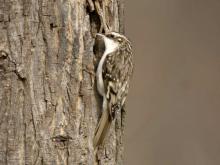
Species Types
Scientific Name
Certhia americana
Description
Like a wren that behaves like a woodpecker, the brown creeper is a small brown and white bird that creeps in upward spirals around the trunks of trees, using its tail as a prop.
Media

Species Types
Scientific Name
Dryobates pubescens (formerly Picoides pubescens)
Description
Downy woodpeckers are ornately decorated with black-and-white upperparts and white underparts. They are often seen foraging for insects on tree bark or visiting suet feeders.
Media
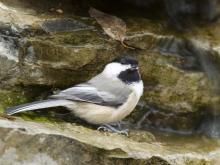
Species Types
Scientific Name
Poecile atricapillus and P. carolinensis
Description
Chickadees are common in backyards. These black-capped, perky insectivores are present year-round. There are two species in Missouri that look quite similar.
Media
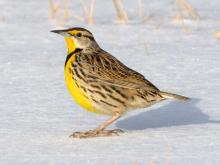
Species Types
Scientific Name
Sturnella magna
Description
In prairies and other open grassy areas, eastern meadowlarks sing sweet, slurring songs from fence posts and power lines. Note the long, sharp bill and the yellow breast with black V-shaped marking.
Media

Species Types
Scientific Name
Icterus spurius
Description
The orchard oriole is a common summer resident in Missouri. Males are rusty and black; females are olive green and yellowish. Look for them high in trees in places with scattered trees, especially near water.
Media
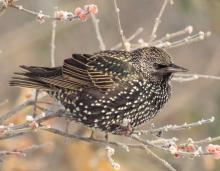
Species Types
Scientific Name
Sturnus vulgaris
Description
Few Americans love this bold nonnative bird, purposefully introduced to our continent in the late 1800s and now abundant throughout our country.
Media

Species Types
Scientific Name
Junco hyemalis
Description
Dark-eyed juncos, or "snowbirds" as they are widely known, are sparrows. Juncos are abundant throughout Missouri during the winter. What many people are not aware of is that there are two color forms of juncos that occur here.
Media
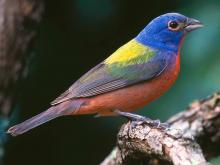
Species Types
Scientific Name
Passerina ciris
Description
The male painted bunting is one of the most colorful birds in North America, with its blue head, red underparts, and green back. Look for it in tangles and thickets in the southwest part of our state.
Media
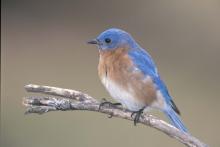
Species Types
Scientific Name
Sialia sialis
Description
The eastern bluebird is the state bird of Missouri. Many say its song sounds like “Cheer cheerful charmer.” The male has blue upperparts and rusty and white underparts.
See Also







Media

Species Types
Scientific Name
Hemaris diffinis
Description
The snowberry clearwing is a moth that confuses people because it looks like a bumblebee and flies like a hummingbird!
Media

Species Types
Scientific Name
Hyles lineata
Description
The white-lined sphinx moth sometimes confuses people because it flies, hovers, and eats from flowers like a hummingbird. The adults often fly during daylight hours as well as in the night and are often found at lights.
Media

Species Types
Scientific Name
Darapsa myron
Description
The Virginia creeper sphinx moth is common in woods and brushy areas and comes to lights at night. The larvae eat Virginia creeper and grape leaves.
Media

Species Types
Scientific Name
Perimyotis subflavus (formerly Pipistrellus subflavus)
Description
Tri-colored bats, formerly called eastern pipistrelles, are relatively small and look pale yellowish or pale reddish brown. The main hairs are dark gray at the base, broadly banded with yellowish brown, and tipped with dark brown.
Media

Species Types
Scientific Name
Myotis grisescens
Description
Gray myotises are difficult to distinguish from other mouse-eared bats. A key identifying feature of the gray myotis is that its wing is attached to the ankle and not at the base of the toes. It’s an endangered species.
Media

Species Types
Scientific Name
Myotis lucifugus
Description
The little brown myotis (little brown bat) is one of our most common bats, but populations are declining. White-nose syndrome has taken a heavy toll in northeastern states. This species is now listed as vulnerable across its range.
Media

Species Types
Scientific Name
Myotis sodalis
Description
The Indiana myotis, or Indiana bat, summers along streams and rivers in north Missouri, raising its young under the bark of certain trees. It is an endangered species.
About Birds in Missouri
About 350 species of birds are likely to be seen in Missouri, though nearly 400 have been recorded within our borders. Most people know a bird when they see one — it has feathers, wings, and a bill. Birds are warm-blooded, and most species can fly. Many migrate hundreds or thousands of miles. Birds lay hard-shelled eggs (often in a nest), and the parents care for the young. Many communicate with songs and calls.





















